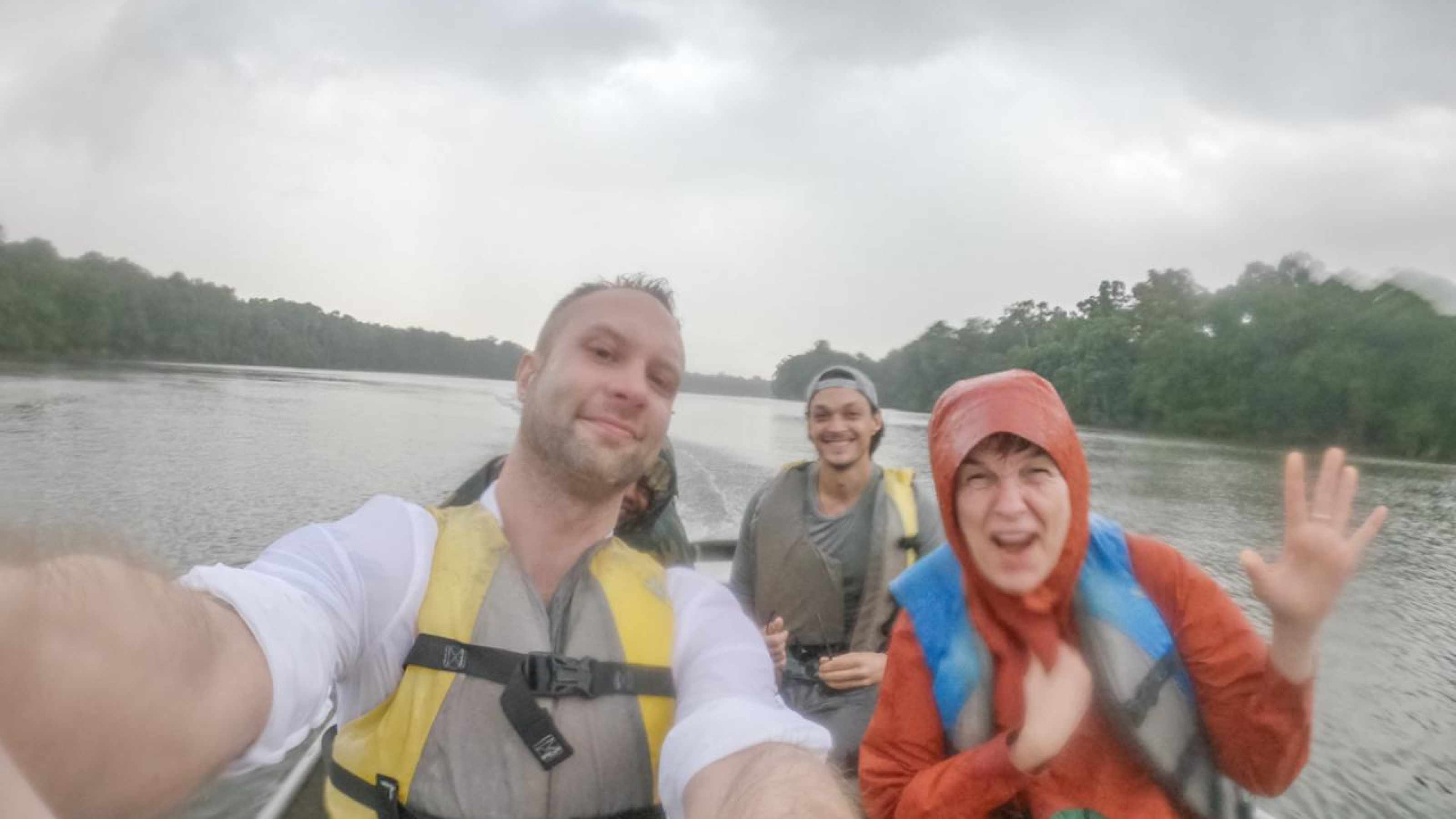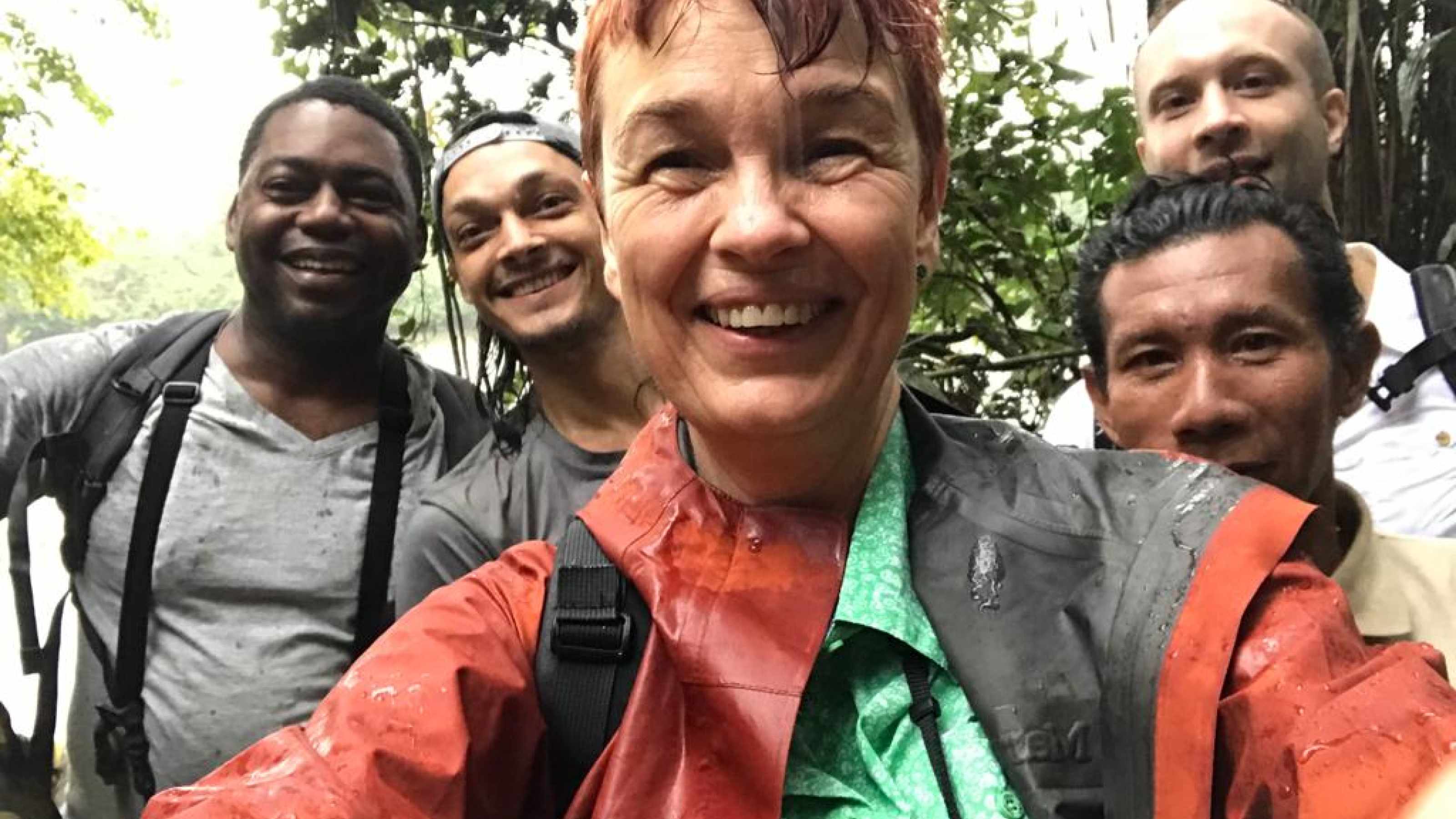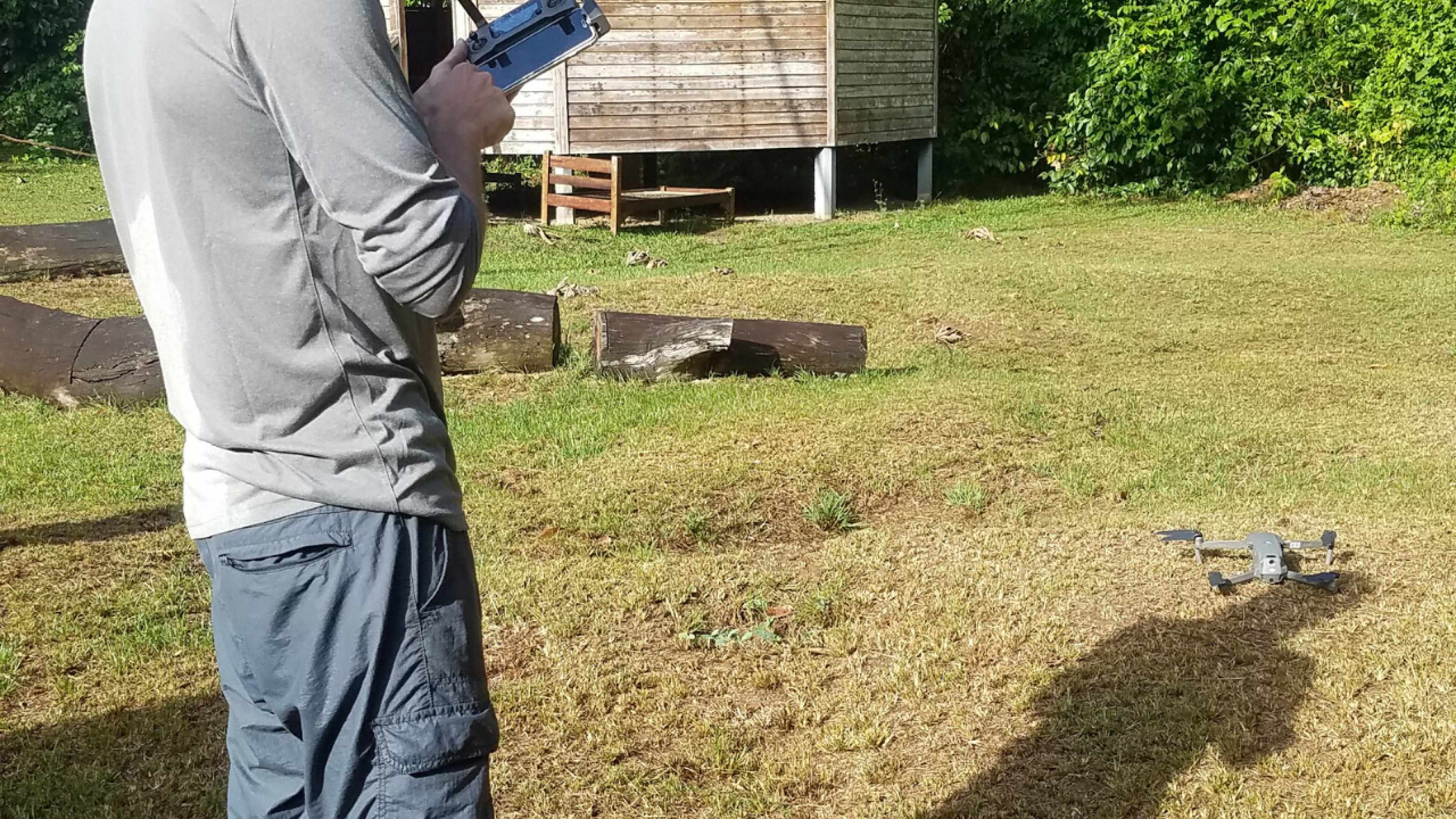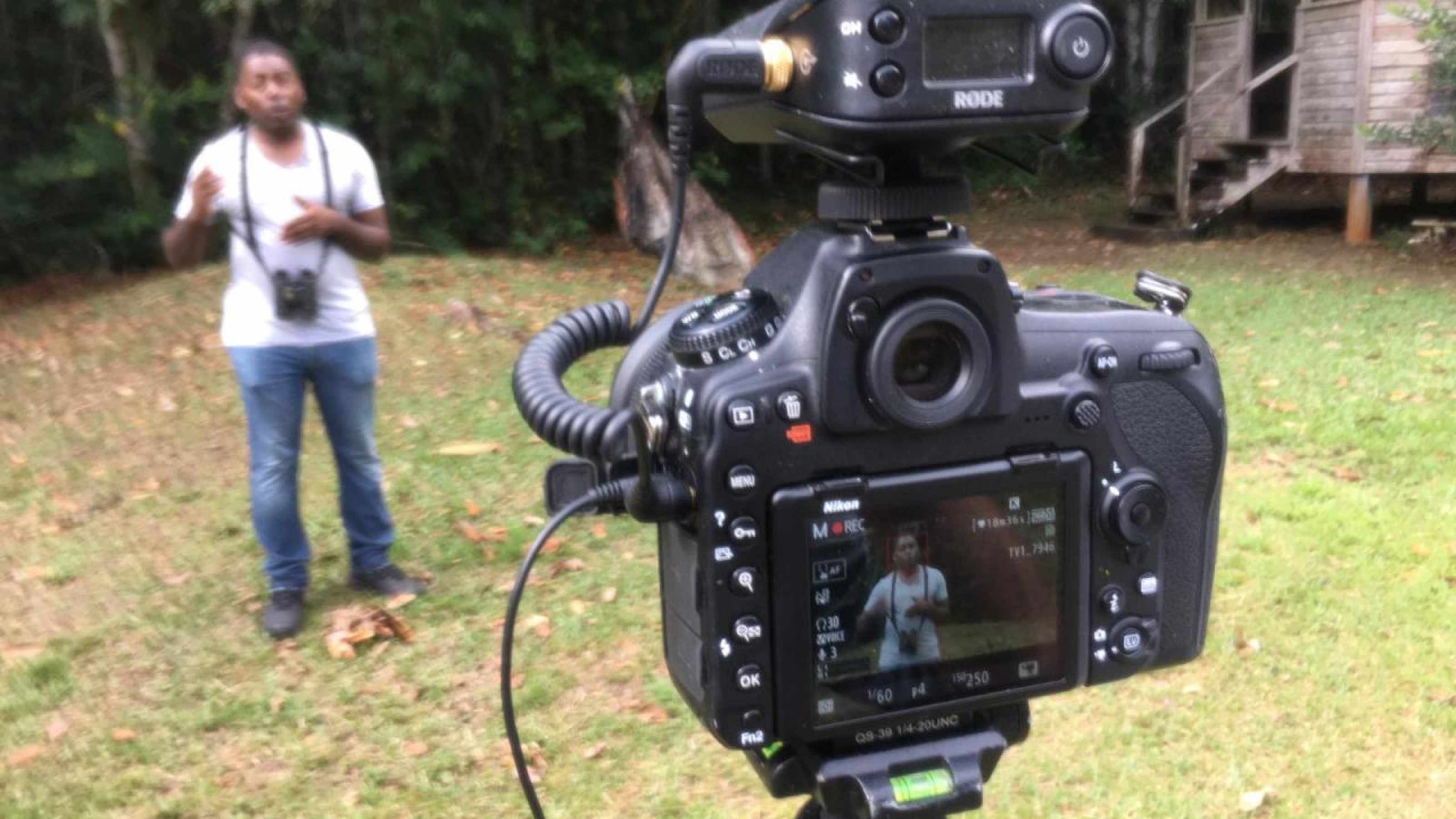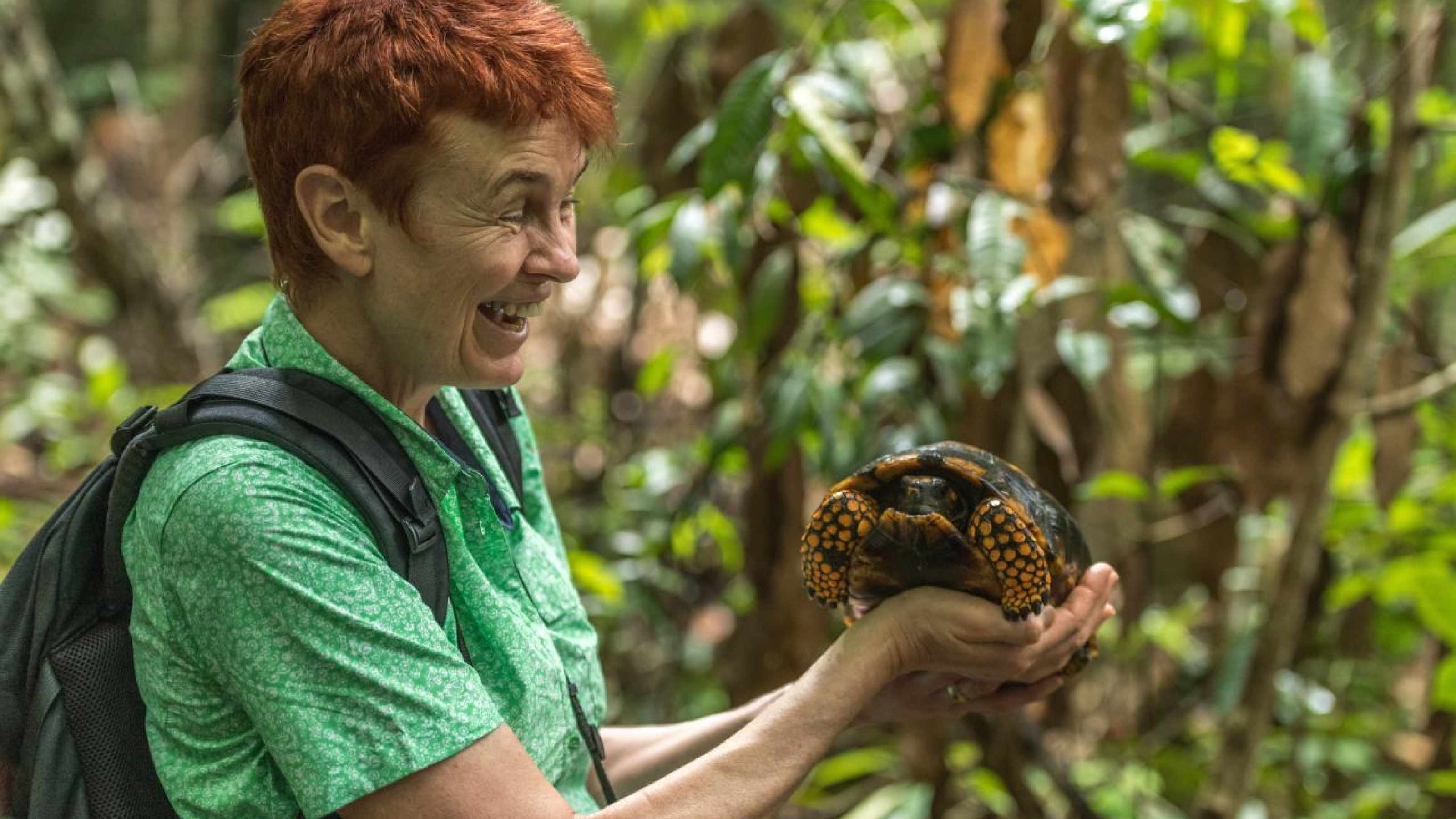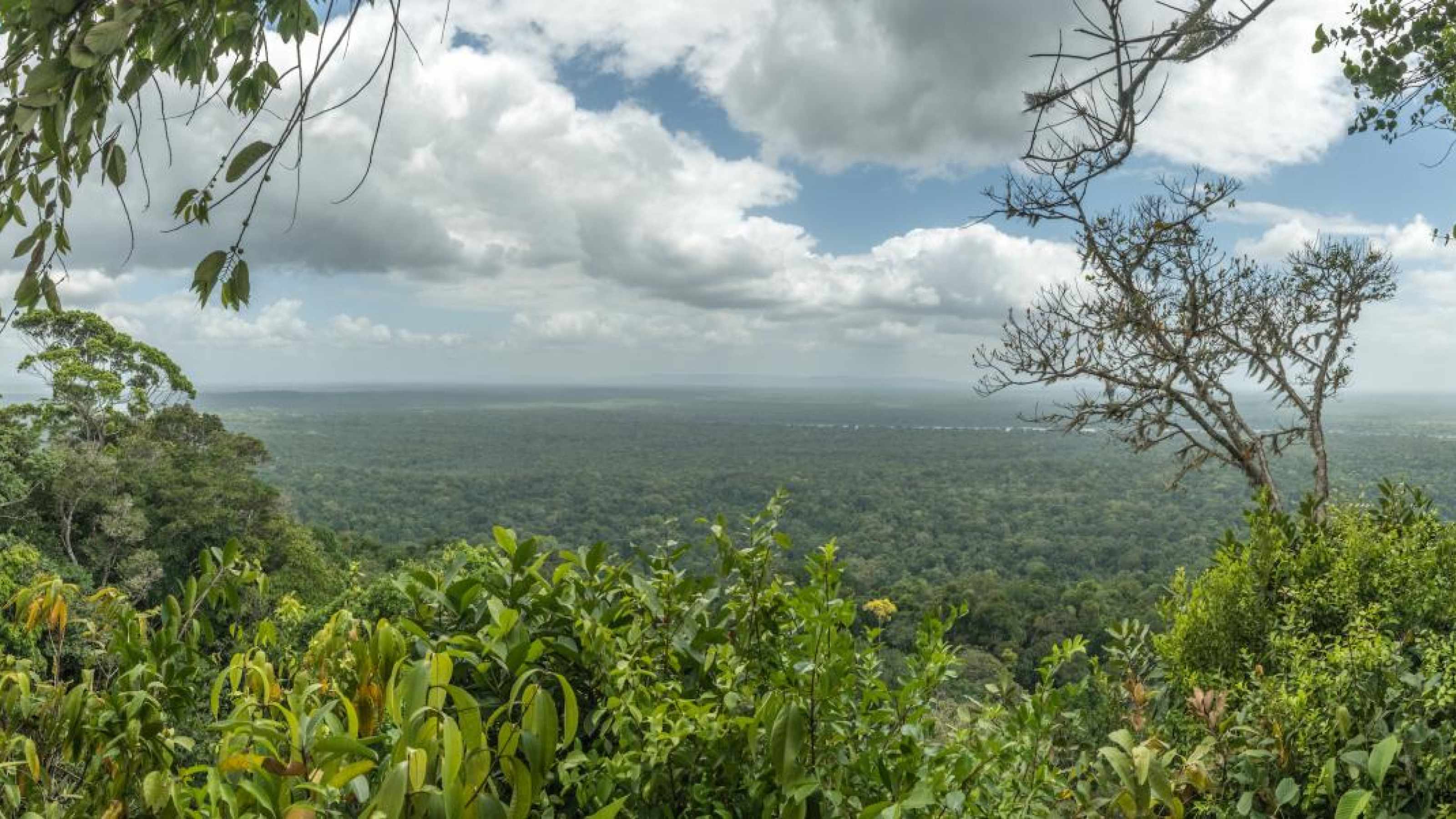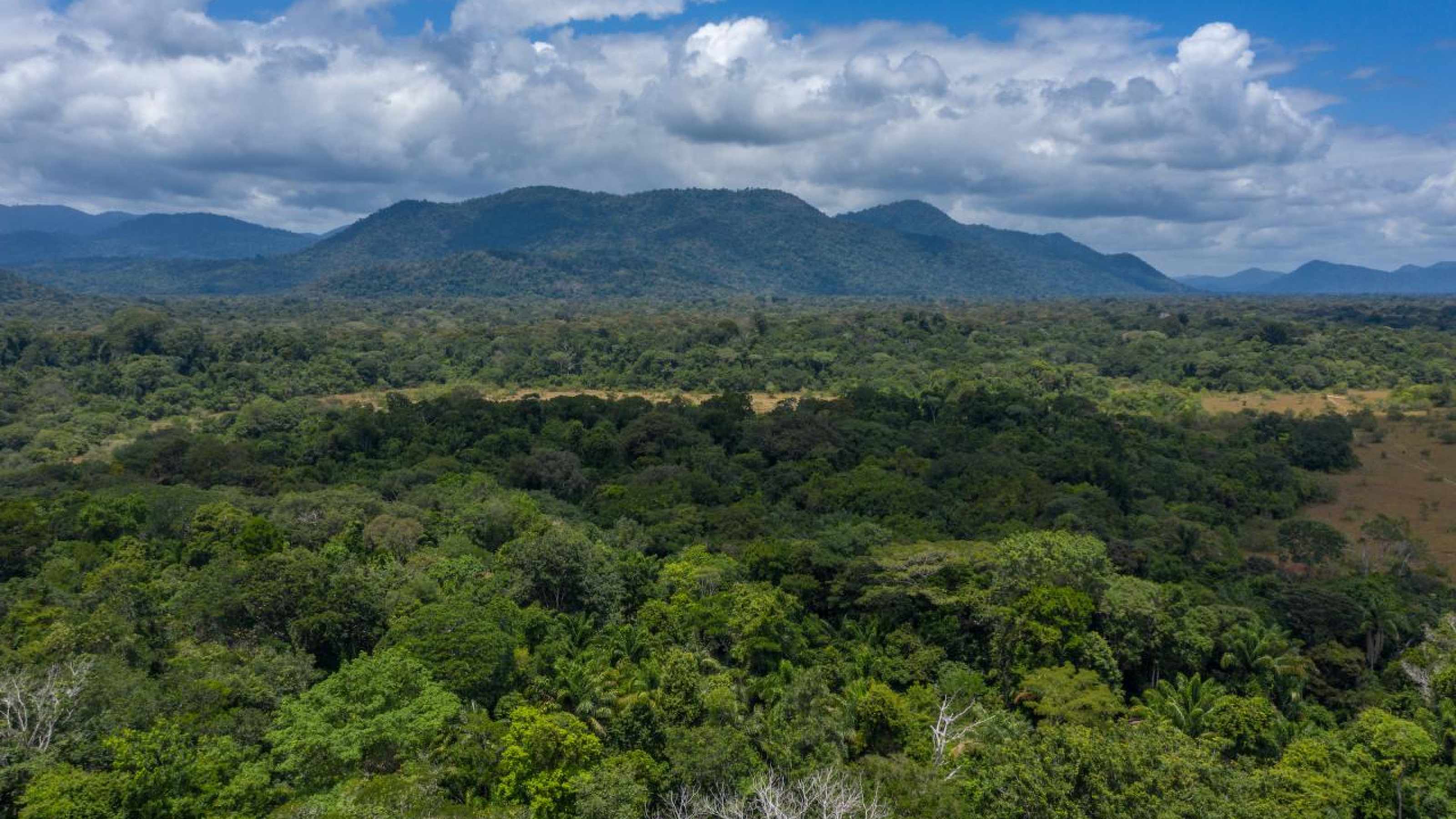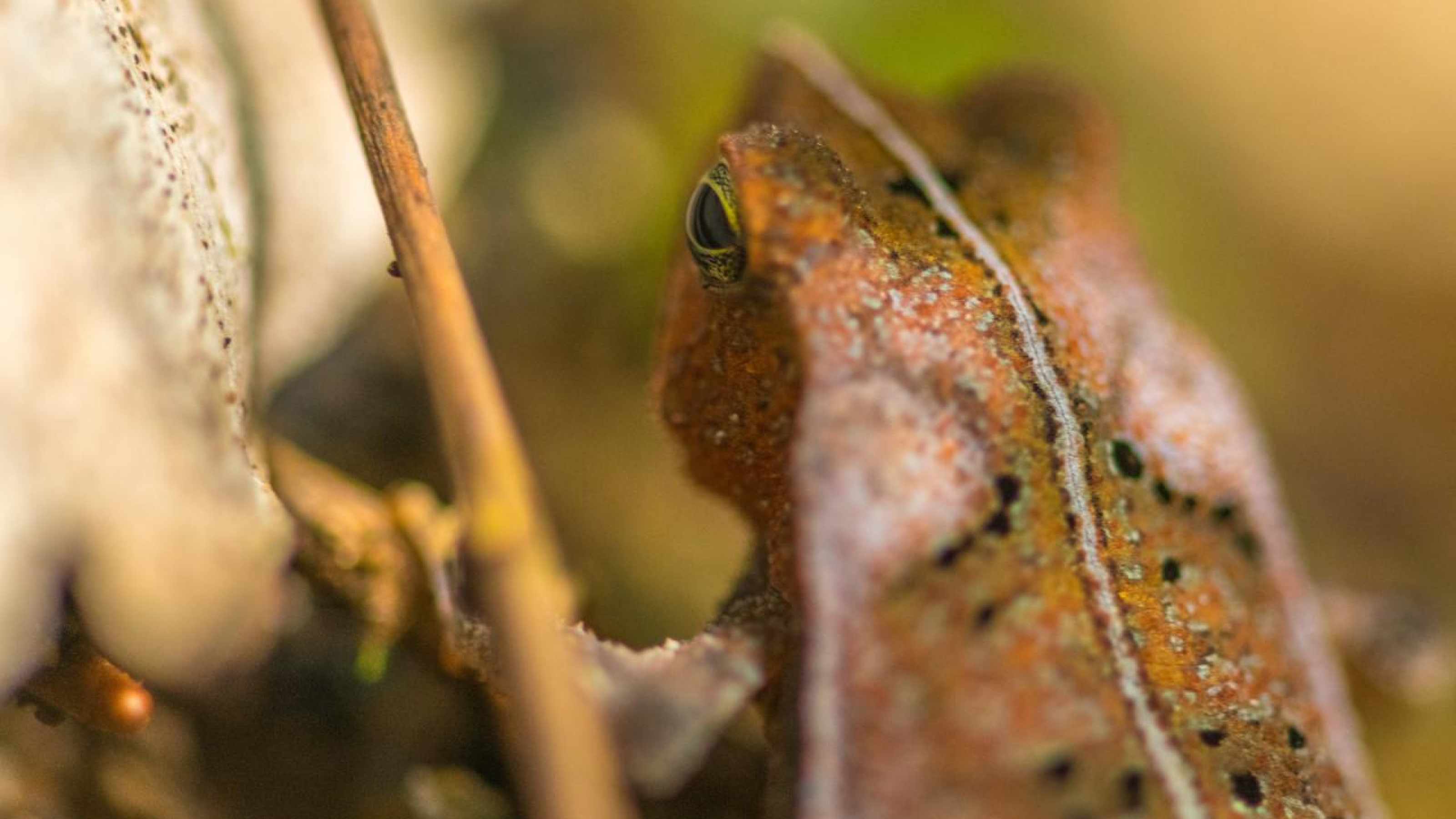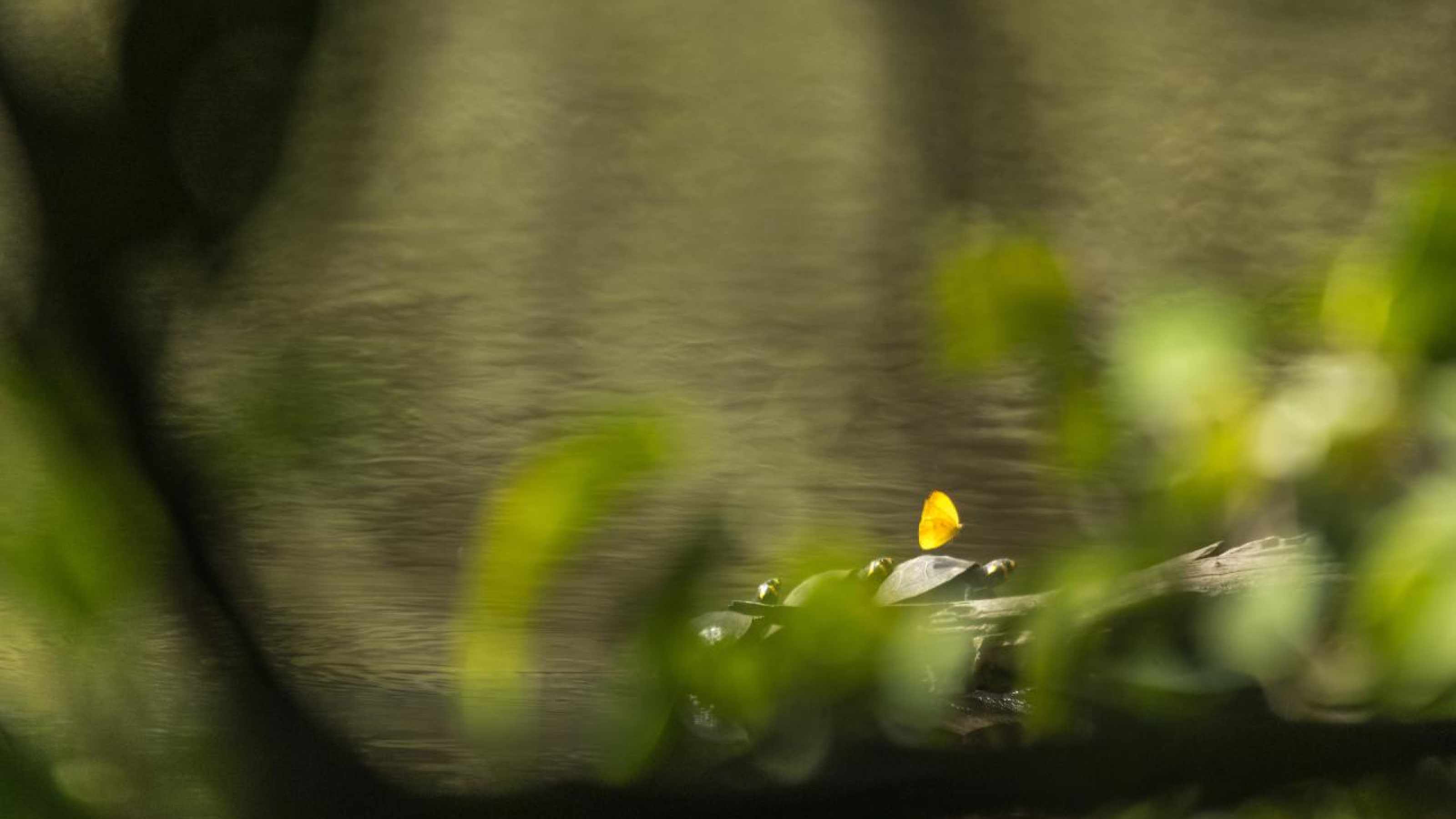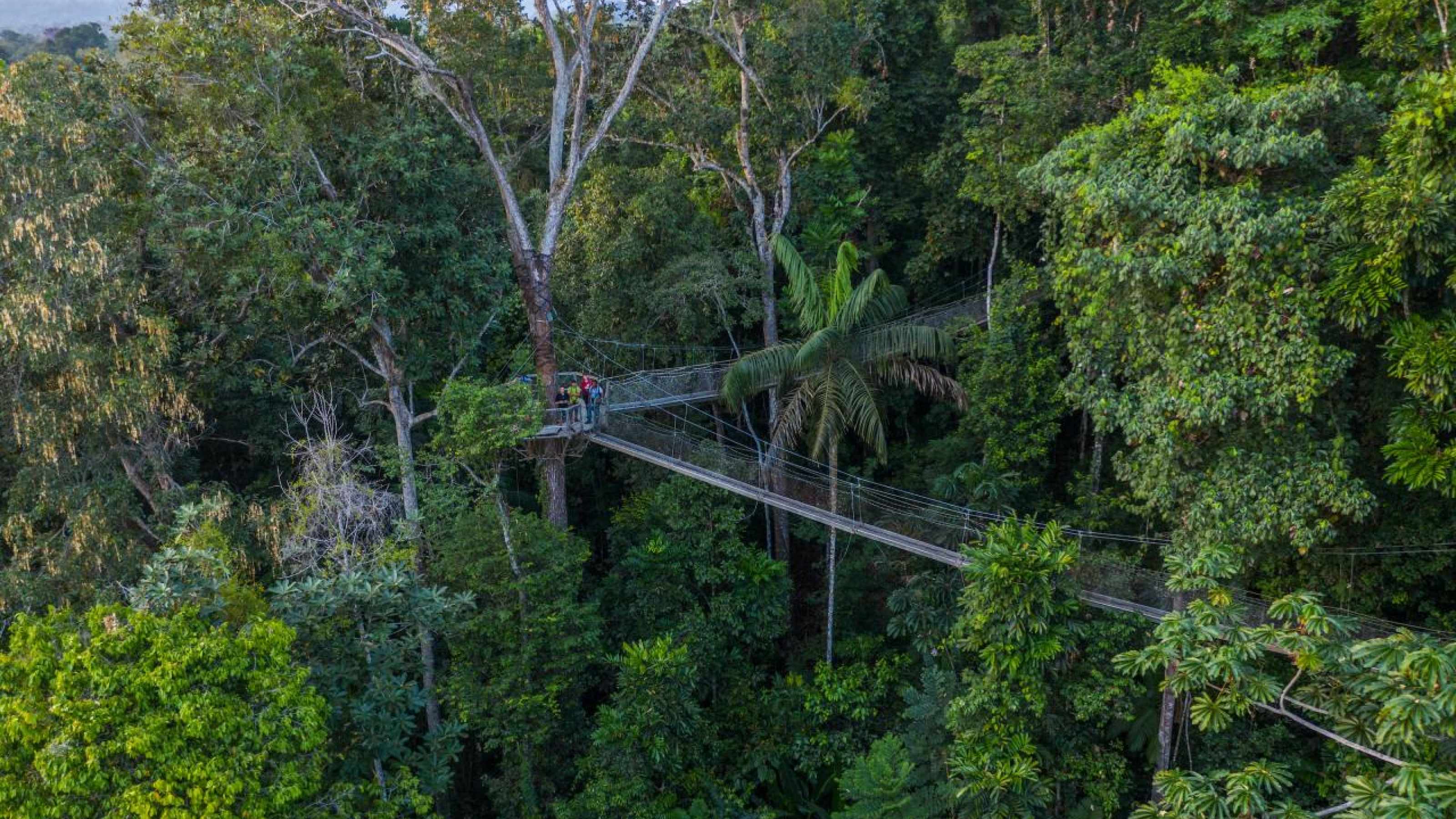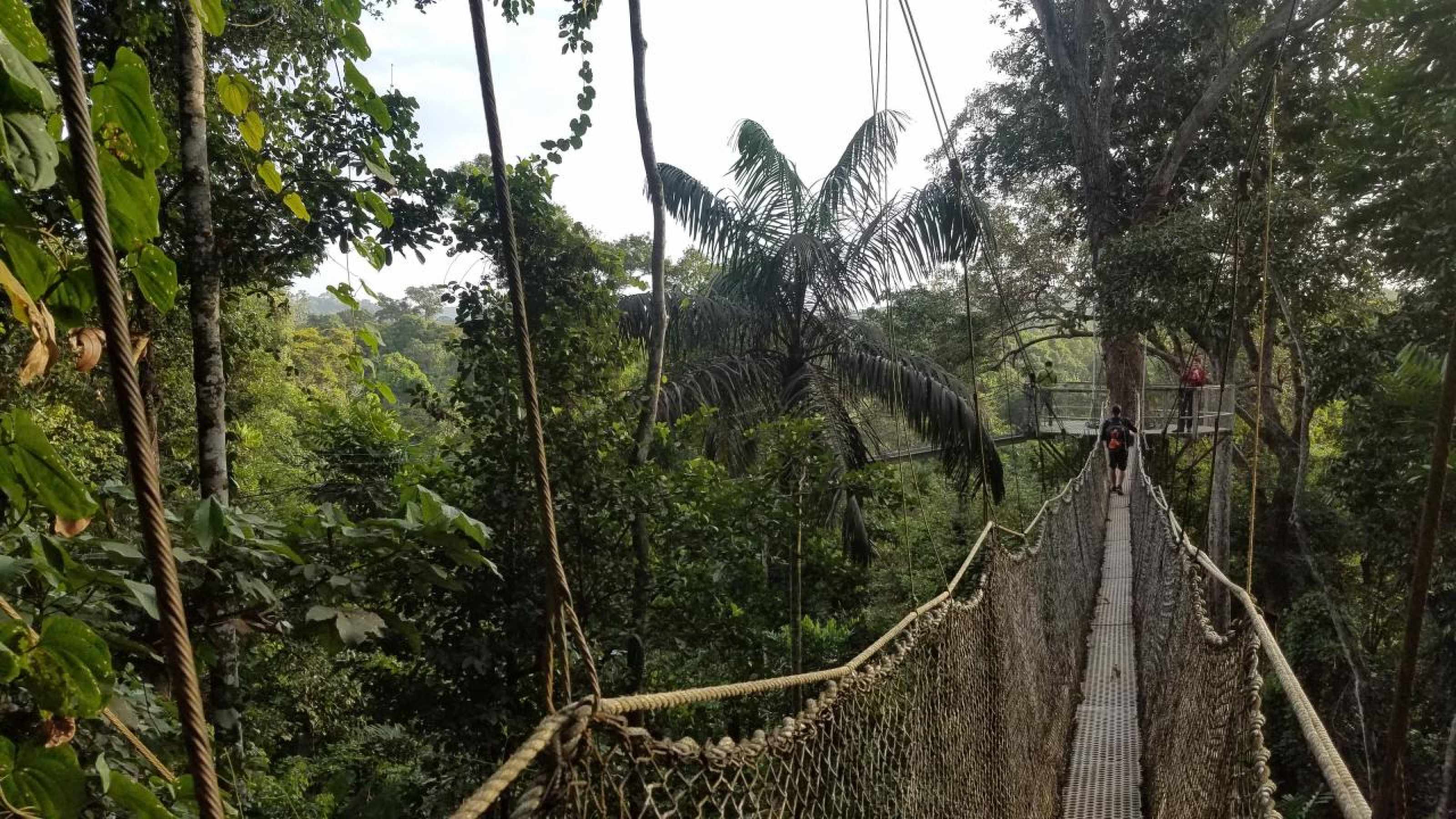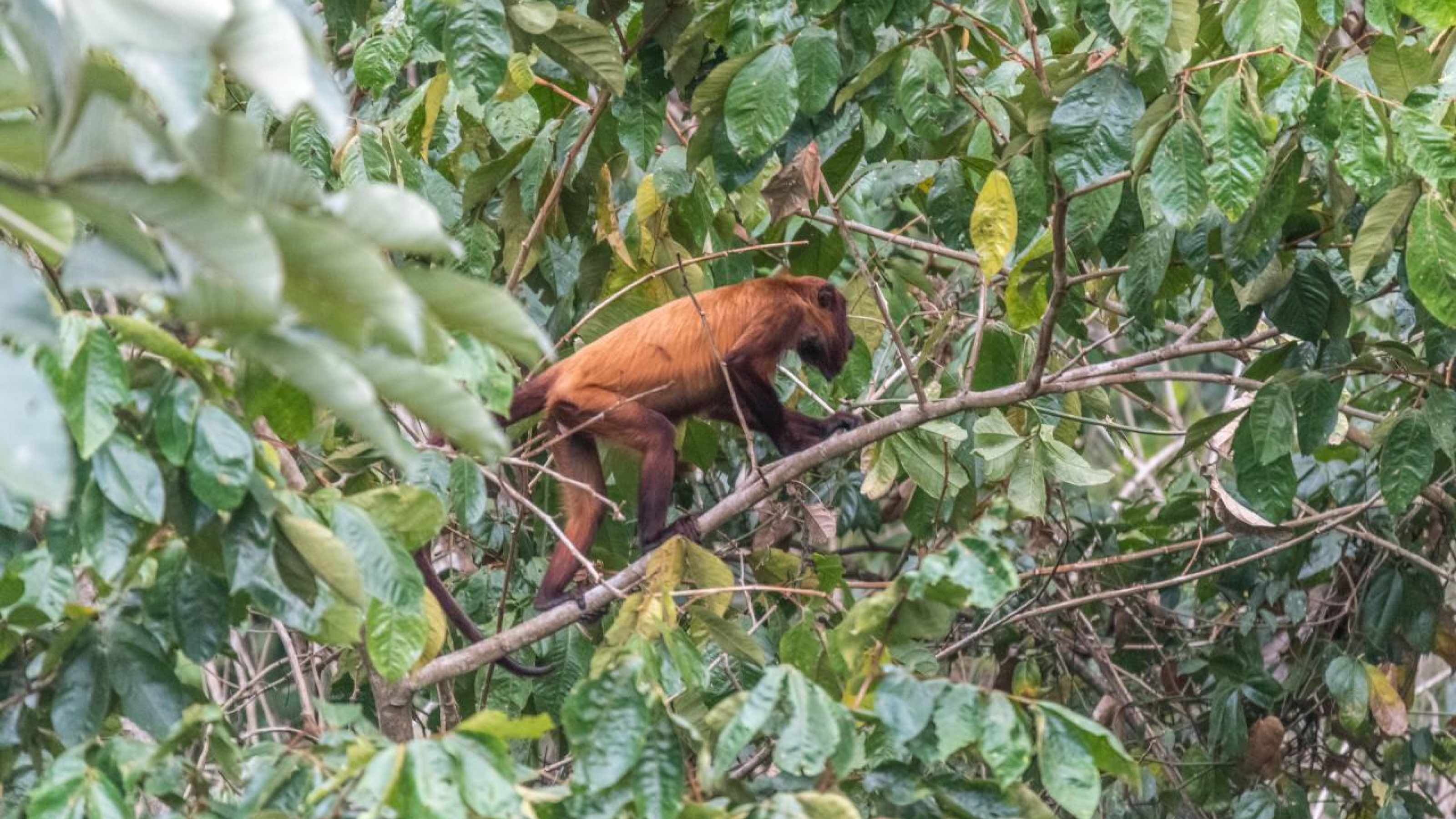Luke makes us get up at 5 o’clock, but the approaching heavy rain puts an end to the plans of an early start. At last, we get onto the boat, which will bring us downriver from the camp to below Turtle Mountain. And then it pours with rain again, becoming more torrential by the minute, as we are following and heading straight towards the downpour. I just about manage to put my rain anorak on, Tom protects his camera equipment with a double bin bag, when the downpour soaks us to the skin (luckily I’m not completely wet). Denis and Tom stoically endure the rain, similarly to the two Makushis, who remain expressionless during the showers. We’re soaking when we arrive at the camp in the forest. As sunshine starts to appear, we begin the interview with Luke, who earns his living with ecotourism. Guyana is slowly attracting attention and received the 2019 prize for the world’s Nr.1 ecotourism destination. It was awarded to Guyana at the global travel fair ITB in Berlin.
Then we set off up the 300-metre Turtle Mountain. A second group of tourists passes us, its guide turning off suddenly into the bushes. We follow immediately, as they are looking for the incredibly rare cuckoo that lives on the ground. Just as we are about to break off the unsuccessful search, Luke discovers a yellow-footed tortoise on the leaf-covered earth. At first it hides its head in its shell, but after we’ve been standing around it for a while, it decides to crawl on while we are watching.
Logging and gold-digging
Arriving at the peak, we have a fantastic panorama. A white hawk circles in the sky and we enjoy the view to the Essequibo and the mountains, about 30 kilometres away. The protected zone ends at the river. We are told that beyond this point a so called sustainable logging is taking place, allowing the largest trees in the rainforest to be taken away. Luke is very upset, as he talks about it. When you know that these trees represent a habitat, that in part has taken hundreds of years to grow, then such a sustainable rainforest management should be approached with caution. Later, we also learn that in the meantime, wood sacrilege has increased drastically in this area. And a further problem: gold-digging has been going on in these distant mountains for a long time, causing big ecological problems right up to the present day and continuing to reach larger dimensions. As we descend, we discover an inconspicuous, little leaf frog, whose beauty we appreciate only later when we look at Tom’s photos. Shortly before the end of our hike, Tom catches sight of river turtles and goes off to take photos of them as they sun on a distant tree stump in the river.
Our next stop is about 20 kilometres away to the canopy walkaway close to Atta lodge. We admire this former research station 30 metres high above the ground. Built by Canadian researchers, it’s now a tourist attraction. We can hear the spotted antpitta again, startle some macaws and feisty buzzards with the drone camera and the camera catches sight of some more howler monkeys. Dusk is falling as we start to return. Our torch illuminates a small, poisonous lancehead snake, which crosses the path ahead.
We drive 60 kilometres through the dark on the relatively well-developed sand track to Surama lodge, located on the edge of the rainforest in the savannah. A large tarantula, a gecko and a tree frog under the roof keep us company at supper.
The full moon shines on an unreal landscape, this time I sleep very deeply.

